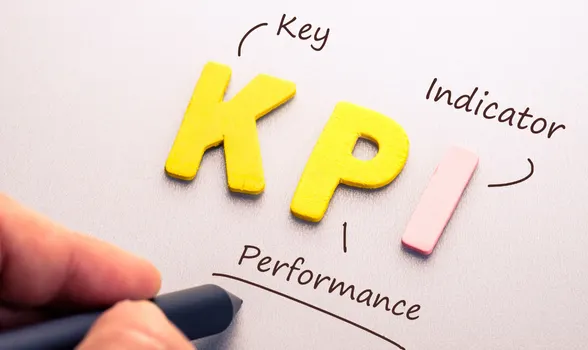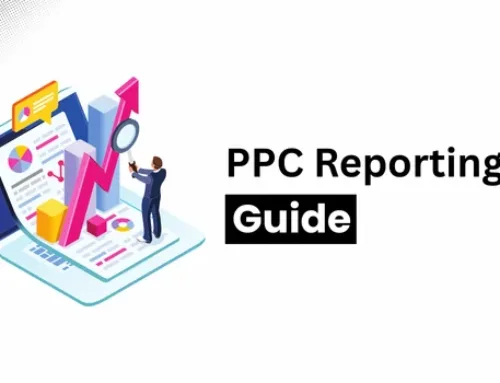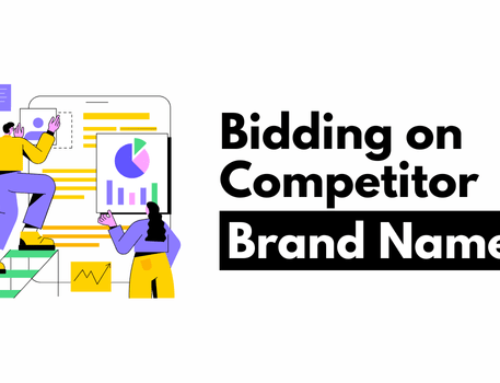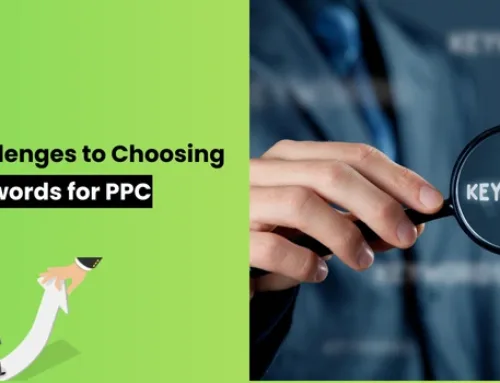Running successful paid search campaigns isn’t just about setting up ads and letting them run. The real magic happens when you measure results consistently. That’s where KPIs in PPC come into play. These key performance indicators act like a compass, helping you see whether your ads are truly working or just eating up budget.
In this blog, we’ll dive deep into the most valuable PPC KPIs every marketer should track, why they matter, and how to make insights out of them. Whether you’re new to PPC or managing multiple campaigns, understanding these numbers will give you clarity and confidence in your decisions.
How to Choose the Most Important PPC KPIs to Monitor?
If you’ve ever searched for the “best PPC KPIs,” you’ve probably noticed a long list of metrics to choose from. The truth is, there isn’t a single set of KPIs in PPC that works for every campaign. What’s important to one business might not matter much to another.
But, Why? Because the right KPIs depend on:
Your campaign strategy: Are you driving traffic, sales, or brand awareness?
- Your competitors: What benchmarks are they hitting?
- Your goals: Do you care more about ROI or visibility?
For example, an eCommerce brand may care deeply about Return on Ad Spend (ROAS) and Cost-per-Acquisition (CPA), while a local business might be more interested in Click-Through Rate (CTR) and Conversion Rate.
The key takeaway: Don’t get lost in tracking dozens of metrics. Focus on the handful of KPIs in PPC that tie directly to your goals.
Why Are KPIs Important in Paid Search?
Measuring success without KPIs is like driving with your eyes closed. You might move forward, but you won’t know if you’re heading in the right direction. Tracking KPIs in PPC campaigns helps you:
Measure performance objectively: Numbers don’t lie. KPIs give you data to prove what’s working.
- Optimize budgets: See which campaigns deliver results and cut wasted spend.
- Identify trends: Spot shifts in consumer behavior before it’s too late.
- Benchmark against competitors: Compare results with industry standards.
- Improve ROI: Fine-tune campaigns to bring more revenue for every dollar spent.
- Set realistic goals: KPIs help you know what success looks like.
- Build accountability: Whether you manage ads in-house or with a PPC agency, KPIs keep everyone aligned.
The Top PPC Advertising KPIs to Track
Now let’s explore the 9 most valuable KPIs in PPC. Marketers widely use these metrics, and every good PPC agency relies on them to gauge performance.
1. Average Click-Through Rate (CTR):
What is it?
CTR shows how compelling your ads are. It measures the percentage of people who click on your ad after seeing it.
How to calculate it?
CTR = (Total Clicks ÷ Total Impressions) × 100
Why does it matter?
A high CTR signals that your ad copy resonates with your audience; low CTR often means your ad needs better wording, stronger calls-to-action, or more relevant targeting.
What’s a good number?
Benchmarks vary, but across most industries, 2% or higher is considered healthy. Top-performing campaigns often see 5%+ CTR.
Improvement Tip: Test multiple ad headlines and descriptions regularly.
For example, if your ad shows 10,000 times and gets 400 clicks, your CTR is 4%, a strong signal that your message is working.
2. Cost-Per-Click (CPC):
What is it?
CPC reveals how much you’re paying every time someone clicks on your ad. It directly impacts your budget efficiency.
How to calculate it?
CPC = Total Cost ÷ Total Clicks
Why does it matter?
High CPCs can drain budgets fast. Monitoring CPC ensures you’re not overpaying for traffic.
What’s a good number?
There’s no universal figure since CPC depends on competition and industry.
Improvement Tip: Refine your keyword list to cut out expensive, low-performing terms.
For example, legal services may pay $50+ per click, while eCommerce may see $1–$2 CPCs. The goal is to lower CPC without sacrificing lead quality.
3. Quality Score:
What is it?
Google assigns a Quality Score (1–10) based on the relevance of your ad, keywords, and landing page.
How to calculate it?
Google factors in expected CTR, ad relevance, and landing page experience.
Why does it matter?
A higher Quality Score lowers your CPC and improves ad positioning. It’s Google’s way of rewarding advertisers who provide a better user experience.
What’s a good number?
Aim for 7 or higher. Scores below 5 suggest your ads or landing pages need optimization.
Improvement Tip: Make sure your ad copy closely matches your keywords and direct users to a landing page that delivers on your ad promise.
For Example, an ad with a Quality Score of 9 may pay 30% less per click than an ad with a score of 4.
4. Conversion Rate:
What is it?
Conversion rate measures how many people completed a desired action (purchase, sign-up, download) after clicking your ad.
How to calculate it?
Conversion Rate = (Conversions ÷ Clicks) × 100
Why does it matter?
High CTR doesn’t mean much if no one converts. Conversion rate shows whether traffic is turning into results.
What’s a good number?
Average conversion rates sit between 2%–5%.
Improvement Tip: Simplify your landing page, use clear CTAs, and reduce form fields to make conversions faster and easier.
For example, industries like finance or legal may see higher rates due to intent-driven searches.
5. Impression Share:
What is it?
Impression share shows how often your ad is displayed compared to how often it could be displayed.
How to calculate it?
Impression Share = Impressions ÷ Total Eligible Impressions
Why does it matter? A low impression share means your competitors are capturing eyeballs you’re missing.
What’s a good number?
Aiming for 70%+ impression share ensures strong visibility. If you’re below that, you may need more budget or better bidding strategies.
Improvement Tip: Increase your budget or raise bids for high-performing keywords to capture more of the available impression share.
For example, if there are 100,000 eligible searches for your keywords and your ad appears 60,000 times, your impression share is 60%.
6. Return on Ad Spend (ROAS):
What is it?
ROAS shows the revenue earned for every dollar spent on ads.
How to calculate it?
ROAS = Revenue from Ads ÷ Ad Spend
Why does it matter?
This is the ultimate profitability metric. If ROAS is low, you’re spending more than you’re earning.
What’s a good number?
A healthy ROAS is usually 400% or higher (earning $4 for every $1 spent).
Improvement Tip: Allocate more budget to campaigns, products, or keywords with a historically higher ROAS, and reduce spending on underperformers.
For example, if you spend $2,000 on ads and generate $10,000 in sales, your ROAS is 500%.
7. Cost-Per-Acquisition (CPA):
What is it?
CPA measures how much it costs you to acquire a single customer or lead.
How to calculate it?
CPA = Total Spend ÷ Total Conversions
Why does it matter?
CPA helps you know if your campaign is financially sustainable. If your CPA is higher than your average customer’s value, it’s time to rethink strategy.
What’s a good number?
There’s no one-size-fits-all. A good CPA leaves enough margin after expenses.
Improvement Tip: Use more precise targeting and audience segmentation.
For example, if your average sale is $200 and CPA is $50, you’re in a good spot.
8. Customer Acquisition Cost (CAC):
What is it?
CAC takes a wider view than CPA by including all costs (marketing, sales, overhead) to acquire a customer.
How to calculate it?
CAC = (Marketing + Sales Costs) ÷ New Customers
Why does it matter?
CAC reveals whether your customer growth is sustainable in the long term.
What’s a good number?
Your CAC should be well below your customer’s Lifetime Value (LTV). Ideally, your LTV should be 3x higher than CAC.
Improvement Tip: Automate parts of your sales funnel and invest in customer retention.
For example, if CAC is $100 and LTV is $400, your campaigns are profitable.
9. Lifetime Value (LTV):
What is it?
LTV measures the total revenue a customer brings over their relationship with your business.
How to calculate it?
LTV = (Average Purchase Value × Purchase Frequency) × Customer Lifespan
Why does it matter?
Pairing LTV with CAC shows the real profitability of your PPC campaigns.
What’s a good number?
As mentioned, aim for an LTV at least 3 times higher than CAC.
Improvement Tip: Encourage repeat purchases with loyalty programs, email marketing, and personalized offers.
For example, if your customer spends $100 per month for 2 years, their LTV is $2,400. If CAC was $200, that’s a fantastic return.
Conclusion
At the end of the day, PPC success isn’t about tracking every number; it’s about focusing on the KPIs in PPC that align with your goals.
By monitoring metrics such as CTR, CPC, Quality Score, Conversion Rate, and ROAS, you’ll gain a clear picture of performance. More importantly, you’ll know where to optimize, when to scale, and how to maximize profitability. With the right focus, your paid search campaigns won’t just run, they’ll thrive.




